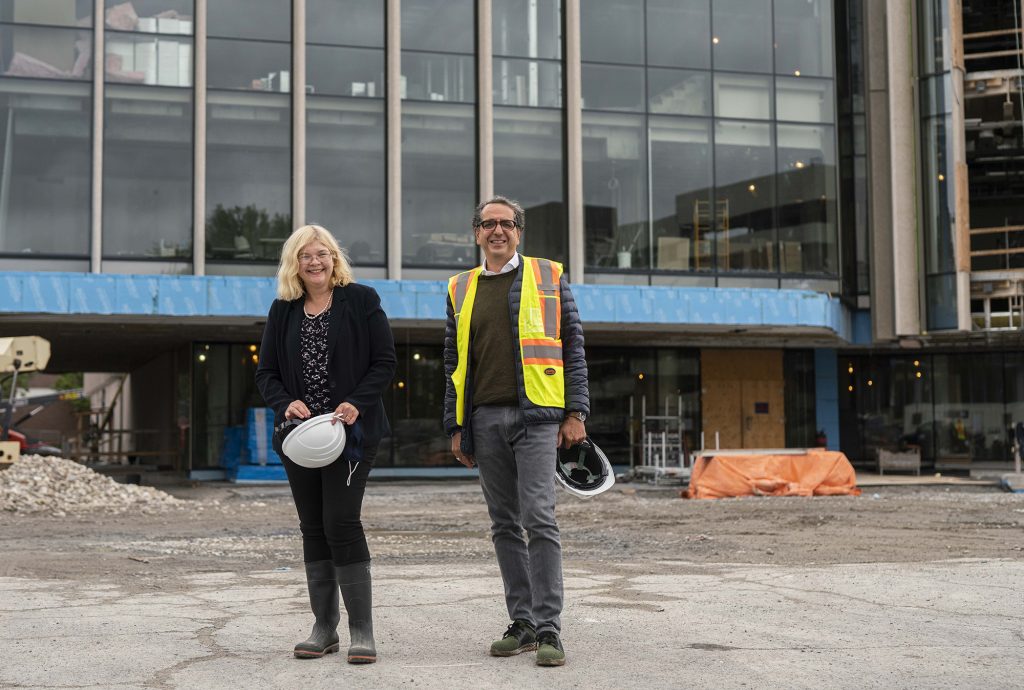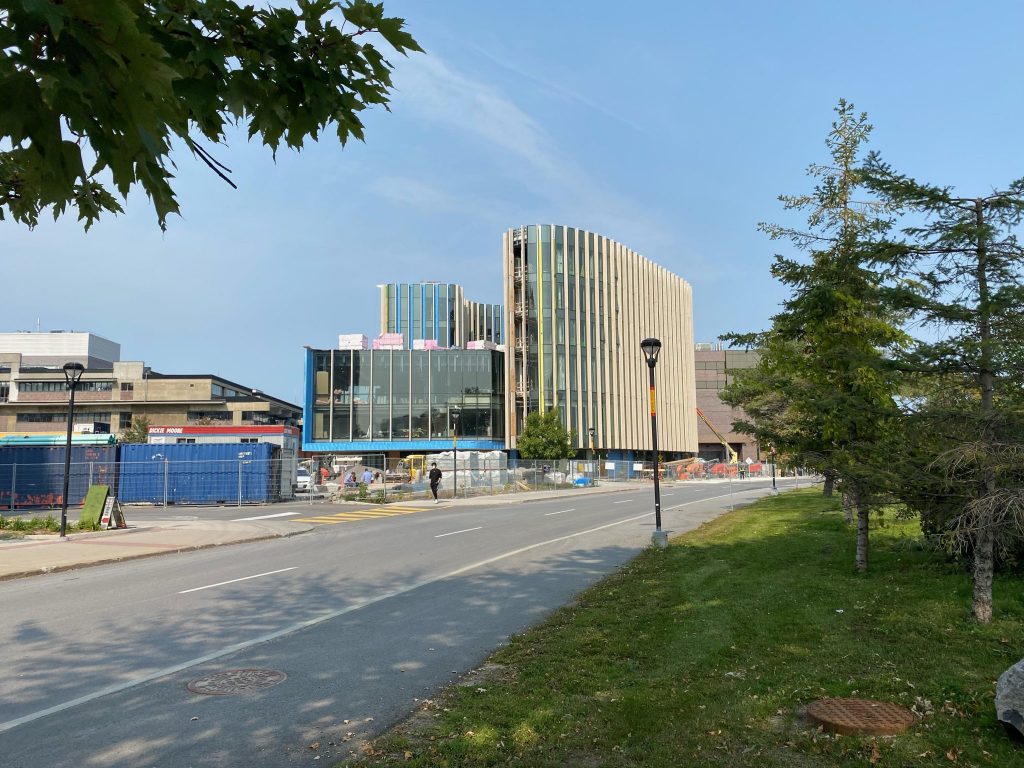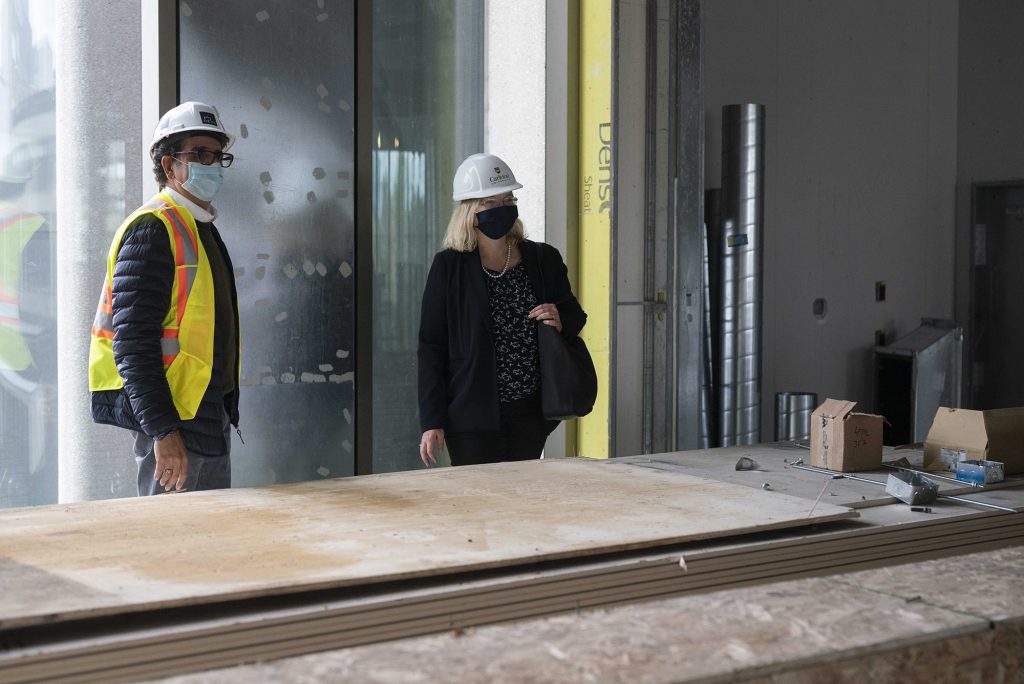A Building that Builds Community
Siamak Hariri, lead architect of the Nicol Building, discusses the future home of the Sprott School of Business
As the new home for Carleton’s Sprott School of Business heads towards completion, we took an opportunity to sit down with Siamak Hariri – a founding partner of Hariri Pontarini Architects and lead architect for the project – to discuss the vision behind Nicol Building’s unique and extraordinary design.

Capturing the Soul
From the beginning, the goal for Siamak and the firm was to capture the soul of the Sprott School of Business centred on its key values – creativity, connection, care, innovation, collaboration and partnership – and create a design which puts aspiration into form.

As Siamak spoke of the design process, it was clear that the end goal was not simply about bricks and mortar, but more so telling the story of the Sprott School of Business through the medium of architecture.
“As humans we have this ability to imagine and aspire. And, that process is to get into a dynamic of engagement and collaboration. Then you start to build together a sense of a story,” Siamak explained. “In the case of the Nicol Building, there were a number of things we really wanted to capture. One was that you are a unique business school. And, you have a certain intimacy, a certain sense of community. We wanted this to become a place where when you walk in you can say ‘this is what Sprott is all about’.”
“The Nicol Building captures in form the feeling of ‘this is special; I want to go to school here.’ It’s different. It’s a building which makes you feel like you’re inside a family – and you feel like you have this embrace, this sense of community and someone in every corner has got your back.”
This has also been a highly collaborative process between Hariri Pontarini Architects, the Sprott School of Business and Carleton University from design to execution.
“The process was not just me noodling in my own little corner – it was highly collaborative,” said Siamak. “We went on tours of other business schools with many of Sprott’s members and there was a real sense that we were going to pick and choose the best of what we felt was out there but within the form that we had evolved as part of the initial competition.”
The Design Evolution
The process then moved on to thinking about what a great business school should be in this day and age and distilling it into three components: the Attractor, the Collector, and the Embrace.
The Attractor
“We wanted to create a building that had presence. Given its prominent location on the campus, we knew this building must not only enhance and serve the Sprott School of Business, but that it would also act as a beacon for the greater Carleton community, drawing people in with its energy and creating an important landmark on the campus,” shared Siamak.
The location of the Nicol Building on the university’s campus serves as a natural point of attraction – with adjacency to Campus Avenue, the proximity to the bus and train stops, and it being a point of convergence for three branches of Carleton University’s tunnel system. A long line of trees along Campus Avenue guides the view from the site toward the Rideau River, which borders campus.
“The design of the building started in response to the particularities of the site. We wanted to create a strong visual connection to the trees and down towards the Rideau River. This long view anchored the building with a sense of place and integrated it with the natural landscape.”
Another important opportunity considered in the design was connecting the building to its location in Canada’s capital, Ottawa.
“Business schools have a rightful place in the world. Ottawa is an important place for the country. You have a lot of things happening within this city. How do also we create a room which becomes one of Ottawa’s rooms?” added Siamak. “It was very much top of mind that you could create within your forum a place that is a hangout for visiting dignitaries, senators and high-profile individuals from around the world that are coming [to Ottawa] and find themselves becoming a part of the hive of the school.”
The Collector
“A great business school is about building community, bridging connections, fostering exchange – and the establishment of lifelong relationships.”
This notion became the foundation for the building’s heart – the forum.

“It is all about fostering collaboration and feeding the space with energy and life,” said Siamak. “Upon entry, this space opens dramatically upwards to the second and third levels, which arc around a sky-lit opening. This dynamic three-storey core is accentuated with a circular feature stair, linking the main atrium to the community of classrooms and large lecture theatre on the second and third floors.”
The atrium was designed to communicate the Nicol Building’s, and Sprott’s role as a collector – and to connect individual parts of the building with one another.
Also, the arc of the curves of the building were crafted around the visualization of the atrium. Siamak envisioned them gently gathering and funneling energy towards this central forum. The syncopation of the stairs that wind their way around this space from the ground floor up to the second and third floors create a sense of surprise and energy. It relays that Sprott is a creative place.
“I think that’s important in business. This isn’t just humdrum, read your textbooks and leave. You are going to be asked to come in and be imaginative. There is an energy at this school,” said Siamak.
The Embrace
And, finally, the building should embrace all aspects of the school.
“It should be self-evident that Sprott expresses itself as a coherent whole – creating engagement around a dynamic centre and addressing the campus eloquently on all sides.”
Siamak wanted Nicol Building to coalesce seamlessly with the existing landscape while simultaneously exhibiting Sprott’s boldness, ingenuity and place on the global stage. He likens the building to a jewel in the crown of the campus.
“A lot of the design development was really about the evolution of the embrace. We needed to pay special attention to how the curved design would engage with the rectangular geometry of the existing buildings, and how that gentle arc needed to encircle the contents within.”
A Building that Builds Community and Reflects Excellence
Calling the future home of the Sprott School of Business “a building that builds community”, Siamak emphasized that the Nicol Building’s “sense of intimacy” was by far his favourite element and the design had accomplished what he had intended.
“Our intention was to create a building that had enough presence to make it stand out in the landscape of business schools, but to balance it with a sense of intimacy – a place where students feel supported and embraced by their community.”
Additionally, the firm strived to design the building to the highest level of sustainability from core to skin.
And, now – with less than a year remaining until the doors open – Siamak hopes for the building to become, above all, an image of excellence that invokes pride in the entire Sprott community. And, down the line, when students look back at their time at the Sprott School of Business, they don’t just say that they went to Sprott or they went to Carleton, but also that their school was in the Nicol Building.
[The images contained within have been provided by Hariri Pontarini Architects and the Sprott School of Business. The sketches are by Siamak Hariri.]